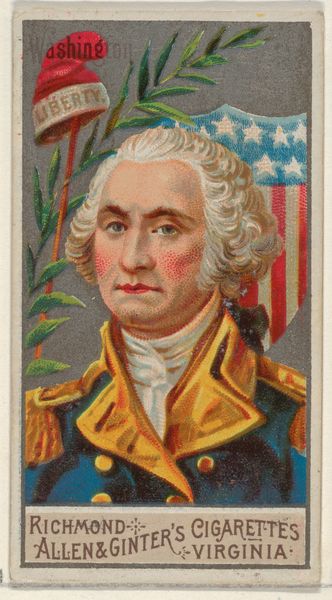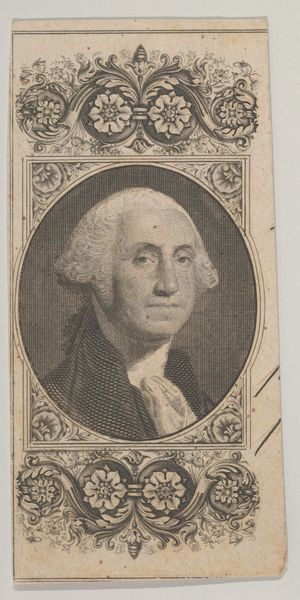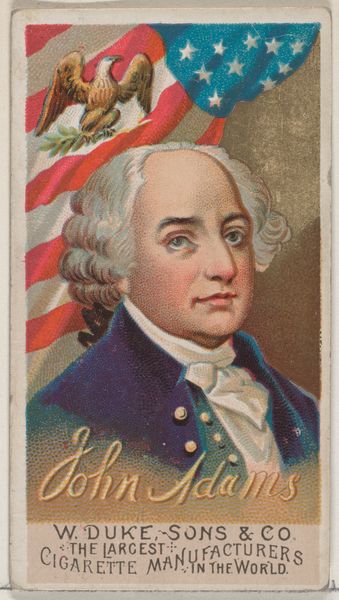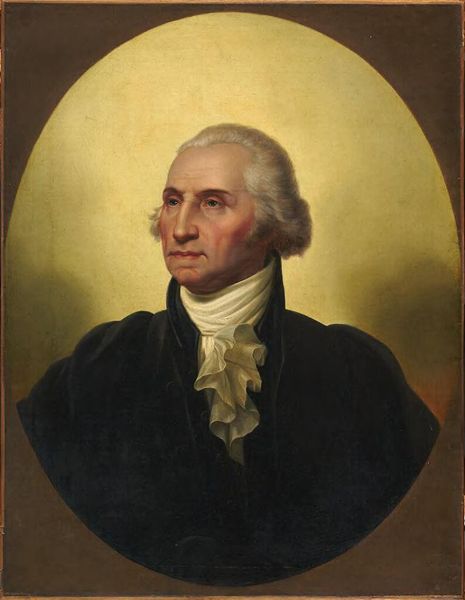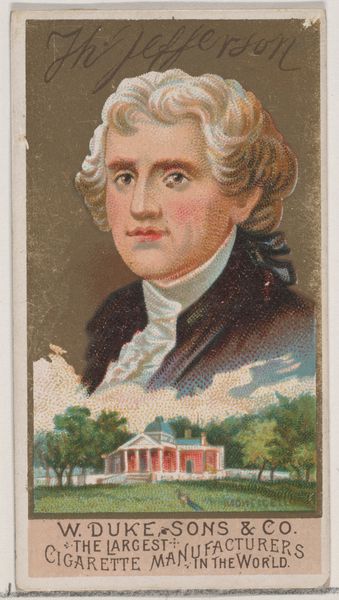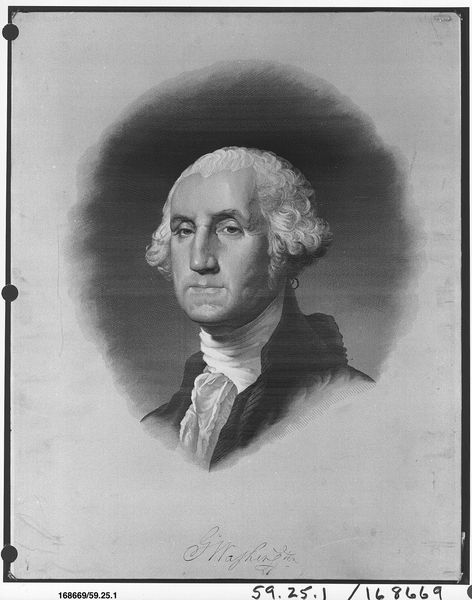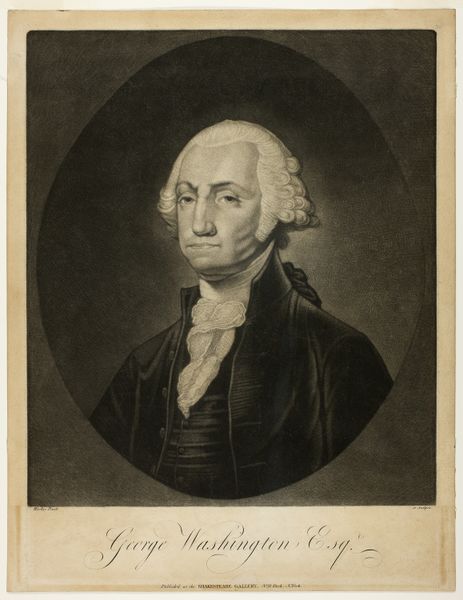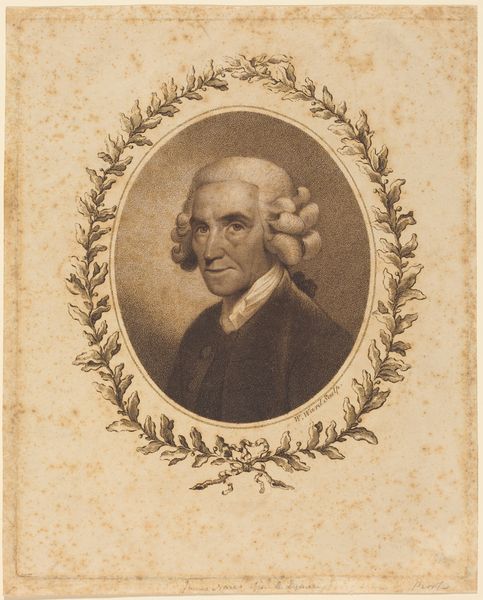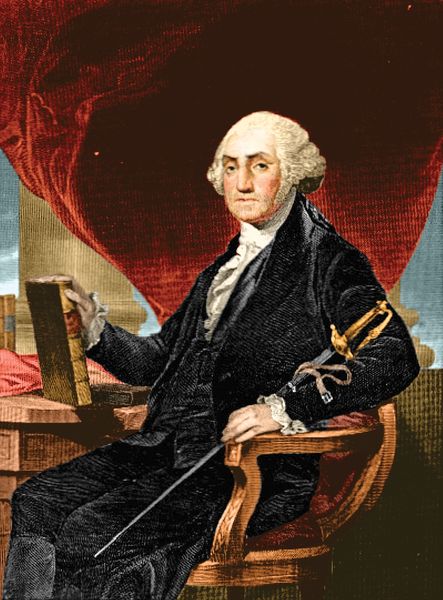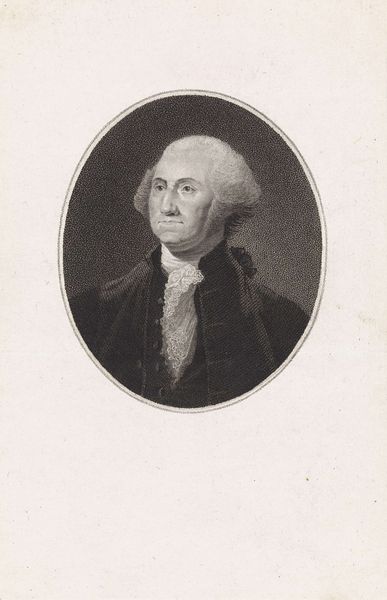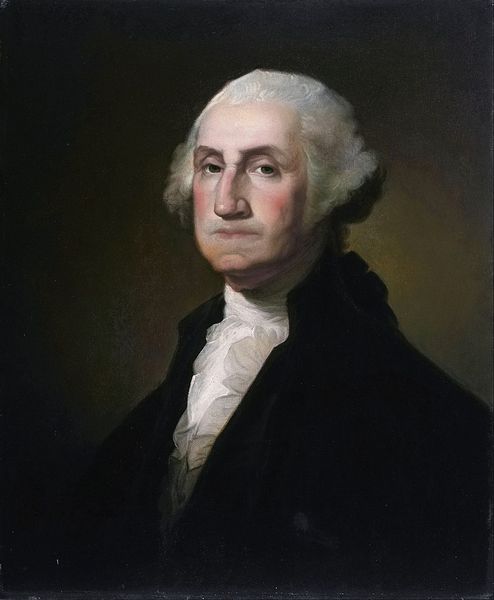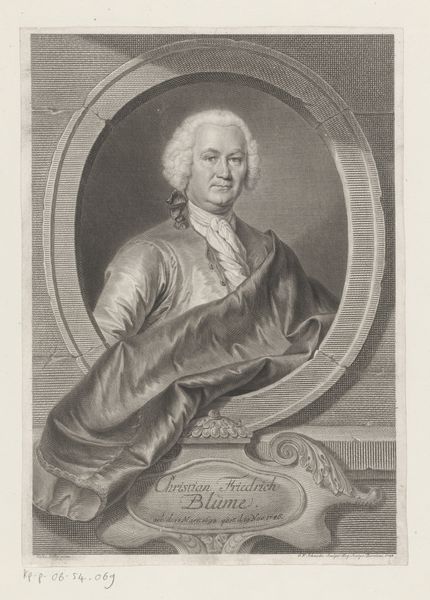
George Washington, from the series Great Americans (N76) for Duke brand cigarettes 1888
0:00
0:00
drawing, print
#
portrait
#
drawing
#
art-nouveau
# print
#
history-painting
#
portrait art
#
realism
Dimensions: Sheet: 2 3/4 × 1 1/2 in. (7 × 3.8 cm)
Copyright: Public Domain
Curator: Let's discuss this fascinating piece from 1888: "George Washington, from the series Great Americans," part of W. Duke, Sons & Co.’s advertising campaign for their Duke brand cigarettes. It resides here at the Metropolitan Museum of Art. Editor: Okay, my first thought? It feels a bit… disjointed. You’ve got the serious portrait of Washington, then the bright, almost celebratory background with the Capitol. It's like two different moods fighting for attention. Is it me? Curator: Not at all. The juxtaposition is intentional, tapping into prevailing cultural sentiments about American history and nationalism. Cigarette cards like these were immensely popular. We need to examine how tobacco companies deployed historical narratives to market their products. They helped create the symbolic representation of 'Great Americans' and promoted an aspirational ideal connected to consumerism. Editor: Ah, okay, so it’s layering on the heroism with… lung cancer. Right. Makes you think about whose stories get told, and how they're used. I also can’t help but look at George’s wig—I imagine those curls took work! Curator: The wig is essential. It signifies power, status, and belonging to a particular class at that historical moment. The choice to depict Washington in this style speaks volumes about the intended audience and the message they wanted to convey. How do you interpret the choice of rendering in print rather than paint or photography, particularly given the date it was made? Editor: Hmmm. Prints democratize it a bit, right? More people have access, it becomes… less precious, perhaps. I think of how accessible things can become now online; everyone is sharing and remixing. But there’s still such reverence in depicting a “great man” – do these images contribute, challenge, or distort how the American dream is viewed, given their commercial agenda? Curator: Exactly. I think these seemingly benign collectibles served a powerful ideological purpose, and it’s something that requires continuous scrutiny and examination. We must keep in mind how notions of heroism and identity continue to intersect with advertising and popular culture today. Editor: Absolutely, something like this shows us we should probably question whose stories are being pushed, or sold, to us, whether they're tied to smoking or, well, anything.
Comments
No comments
Be the first to comment and join the conversation on the ultimate creative platform.
